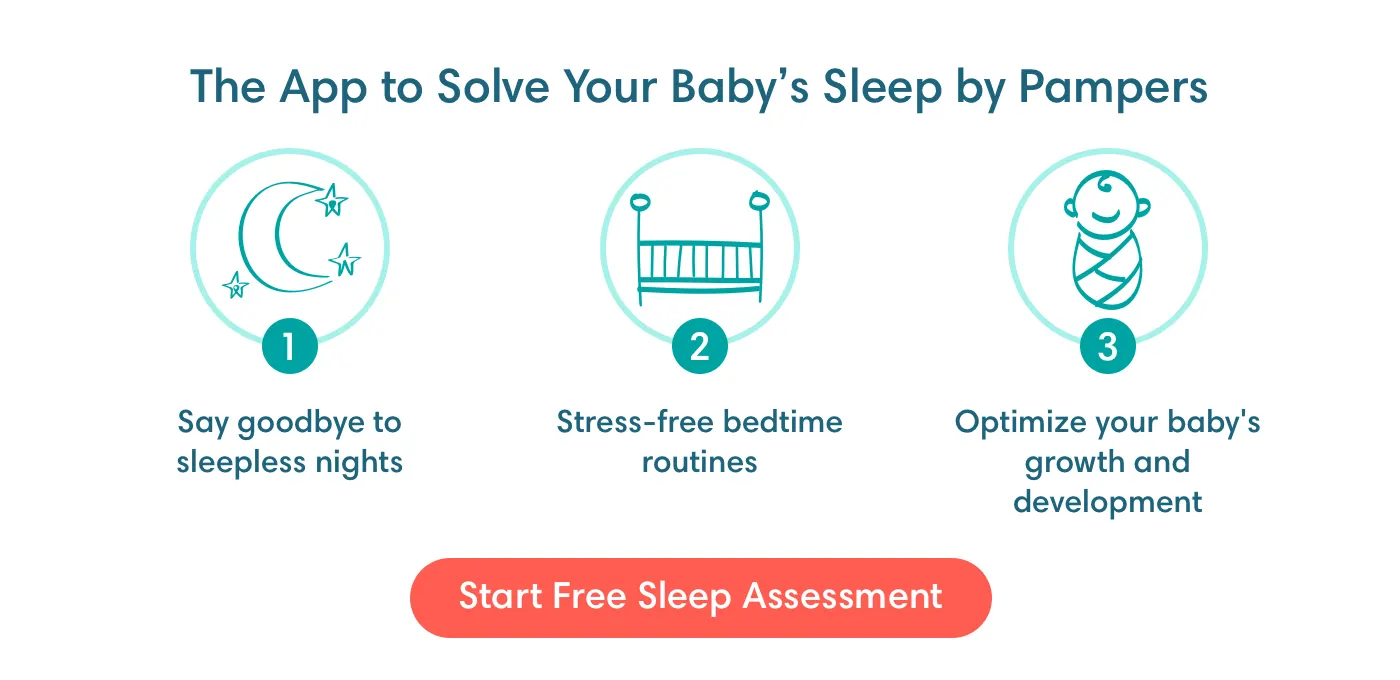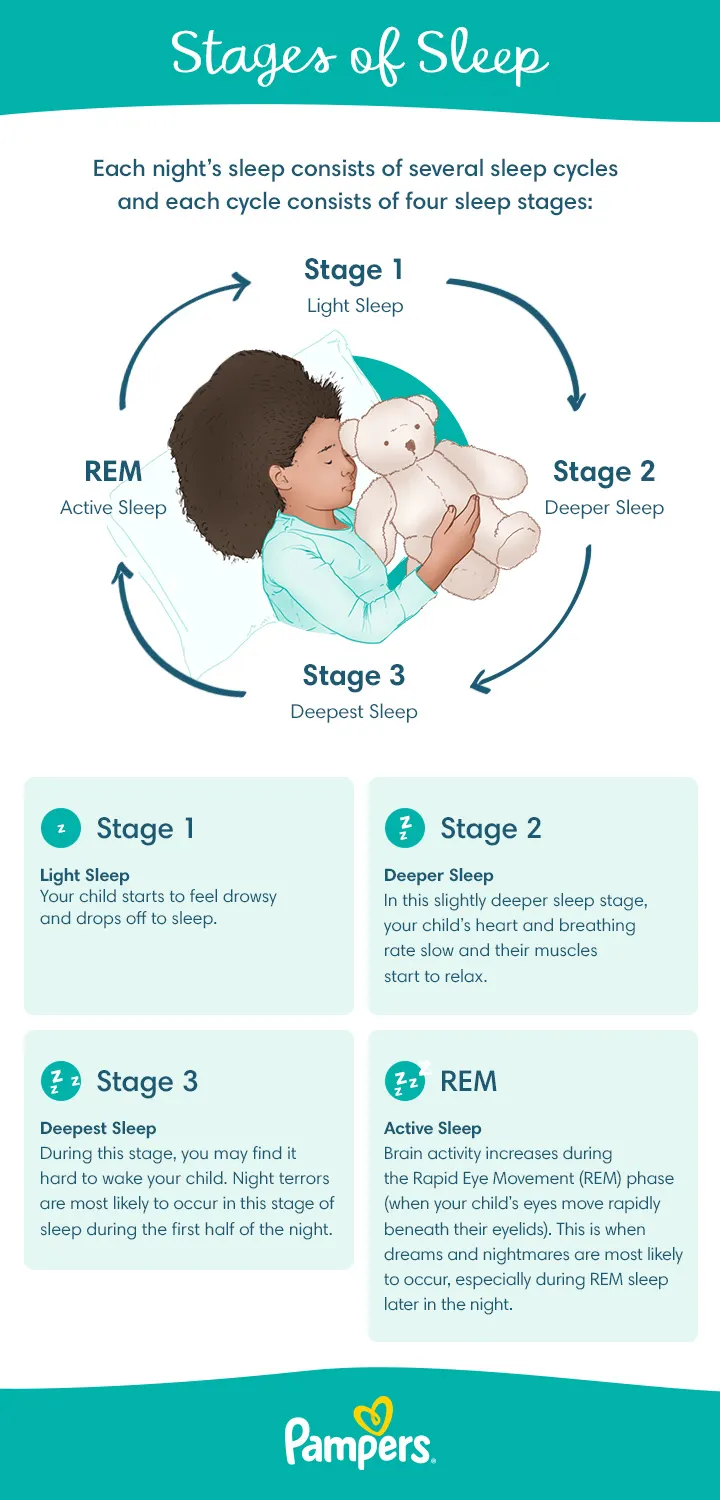Night Terrors in Toddlers
Night terrors in toddlers are different than nightmares, and although they can look a little frightening to you, rest assured that they’re not harmful to your child. Night terrors typically occur during deep sleep, and if you notice your toddler thrashing around in the night with eyes open, a terrified look and a lack of response, it could be a night terror. Read on to learn what night terrors are, what causes them and how to help if your child has one.
What Are Night Terrors?
Night terrors – also known as sleep terrors – are a type of sleep behaviour that may resemble a nightmare, but they’re very different. Witnessing a night terror can be upsetting for parents, but it’s not harmful to your child and most children outgrow these terrors. Unlike a nightmare, once the night terror is over, your toddler will go back to sleep quickly, and won’t remember it.
An episode may last up to 15 minutes, but you’ll be happy to know that night terrors in children aren’t usually a cause for concern or a sign of a deeper medical issue.
At What Age Do Night Terrors in Children Happen?
Night terrors are common in children from 3 years old to 8 years old, but some parents wonder if they can happen in babies or young toddlers, too. Night terrors in 1-year-old babies or a 2-year-old toddler aren’t common, so they aren’t very likely to occur at this age, although it isn’t impossible.
Night terrors in toddlers and children will vary, with some kids experiencing them only once, whereas others might have multiple episodes. The good news is that almost all children eventually outgrow sleep terrors without the need for specialist treatments.
Night Terror Symptoms and Signs
If your child is having a night terror, you might notice some common signs and symptoms. For example, your toddler might:
Scream or shout out in distress
Thrash around
Act upset, scared or panicked
Have their eyes open but not be fully awake
Not recognise you
Speak indistinctively
Jump out of bed
Have no memory of the episode once awake.
If you’re sleeping in separate rooms or happen to be a deep sleeper, you may not even notice that your child is having a night terror, unless you’re woken by the sounds of screaming or thrashing around.
What Causes Night Terrors in Toddlers?
Unlike nightmares, night terrors in toddlers aren’t typically associated with emotional feelings or stress. Rather, night terrors can happen for a few different reasons and typically occur during non-dreaming sleep stage; they often take place within 90 minutes of falling asleep and may last up to 15 minutes.
According to experts, these are some factors that could increase the likelihood of a night terror occurring:
Transitioning to the next stage in a sleep cycle
A family history of night terrors or sleep walking
Your child being overtired or not getting enough sleep
Your child taking a new medication
Your child feeling anxious or excited
Something that wakes your toddler abruptly, such as a loud noise or a full bladder.
Sleep Stages and Cycles
During sleep, children as well as adults go through several sleep cycles composed of different stages. In most of the cycles, a child is switching back and forth between non-REM sleep and REM sleep, which is when active dreaming occurs.
The ratio of non-REM to REM sleep will vary over the course of the night. The first stage of REM sleep is short but will get longer as the night progresses, while non-REM sleep stages will get progressively shorter.
Here's a breakdown of what happens during a night's sleep:
What Is the Difference Between Night Terrors and Nightmares?
To better understand night terrors vs. nightmares in children, check out the table below:
| Nightmare | Night Terror | |
|---|---|---|
| Age range | Nightmares are common between 3 and 6 years old. | Night terrors are common between 3 and 8 years old. |
| How it looks | Your child may wake up crying and afraid because of a scary dream. | our child may scream, cry, thrash around, jump out of bed or appear anxious, with eyes open while not fully awake. |
| When it happens | Nightmares often occur in the second part of the night during the REM stage of sleep (an episode of intense dreaming). | Sleep terrors usually happen within 90 minutes of falling asleep, during non-dreaming sleep. |
| Going back to sleep | Because your child will probably remember the scary dream, they may have trouble falling back to sleep. | Your child won’t remember the night terror and will likely fall back to sleep easily. |
| Underlying issues | Nightmares can happen for any reason, but commonly reflect inner fears, anxiety or a frightening experience, like watching a scary film. | Night terrors are not associated with emotional problems but may run in families, be related to sleepwalking or caused by overtiredness. |
| How to help manage an episode | Comfort and talk to your child and try to soothe and reassure them. It’s best not to try to wake your child during a sleep terror. | Just keep an eye on them and wait for your little one to settle back to sleep. |
| How to handle in the long-term | Talk to your doctor if your child is experiencing nightly or regular nightmares. To help prevent some nightmares, avoid scary shows or films and talk to your child about any stresses or fears. | Most children outgrow night terrors, and there are no specific steps you can take to prevent them. However, you can try putting your child to bed a little earlier to avoid overtiredness. (For more ways to handle night terrors in children, see the next section.) |
How to Handle Night Terrors in Toddlers
Night terrors can be upsetting for you as the parent, so it’s natural to seek a treatment. However, the best way to handle an episode is to simply wait it out and make sure your little one doesn’t hurt themself if thrashing around.
Avoid waking your child up from a night terror. If your child does wake up, they may be confused and take longer to settle down and fall asleep again. Children usually fall asleep on their own after night terrors and won’t have any memory of the episode at all.
Although there is no treatment for night terrors, here are a few things that might help prevent some of them:
Try to reduce any stress in your child's life
Try a few tips to help your child sleep, such as creating a simple and relaxing bedtime routine
Make sure your little one gets enough rest and don’t let them get overtired or stay up too late
Try to put your child to bed earlier than usual if they’re overtired by bedtime or if it’s been a very tiring day
If your child is experiencing night terrors around the same time each night, try waking them up about 15 minutes beforehand for seven days – this could break the pattern without impacting sleep.
When to See a Doctor About Night Terrors
Most children will outgrow night terrors and don’t need medical attention. However, if the night terrors are frequent, occur several nights in a row or you’re worried about them, talk to your doctor. The cause could be something simple and easily treatable, like large tonsils, or your doctor may refer your child to a sleep specialist if needed.
FAQS AT A GLANCE
There’s no need to worry about night terrors in toddlers, as they are fairly common and cause no harm to your child. However, if your toddler experiences frequent night terrors multiple night in a row – or if you’re simply curious or worried about them – talk to your doctor.
The Bottom Line
Night terrors in toddlers can be scary for you, and you might feel helpless and worried about what’s happening to your child. The good news is that these sleep disturbances are harmless and your little one will eventually grow out of them.
Unlike nightmares or bad dreams, which can leave your child feeling anxious or scared, kids don’t remember night terrors once they wake up. During an episode, don’t try to wake your child; they’ll settle down and fall back to sleep on their own.
Creating a calming bedtime routine and ensuring your child isn’t overtired could help prevent some episodes. If you’re worried about regular night terrors, you can always consult your doctor for advice, just to be on the safe side.
The information in this article is based on the expert advice found in trusted medical and government sources, such as the National Health Service (NHS).The content on this page should not replace professional medical advice. Always consult medical professionals for full diagnosis and treatment.



